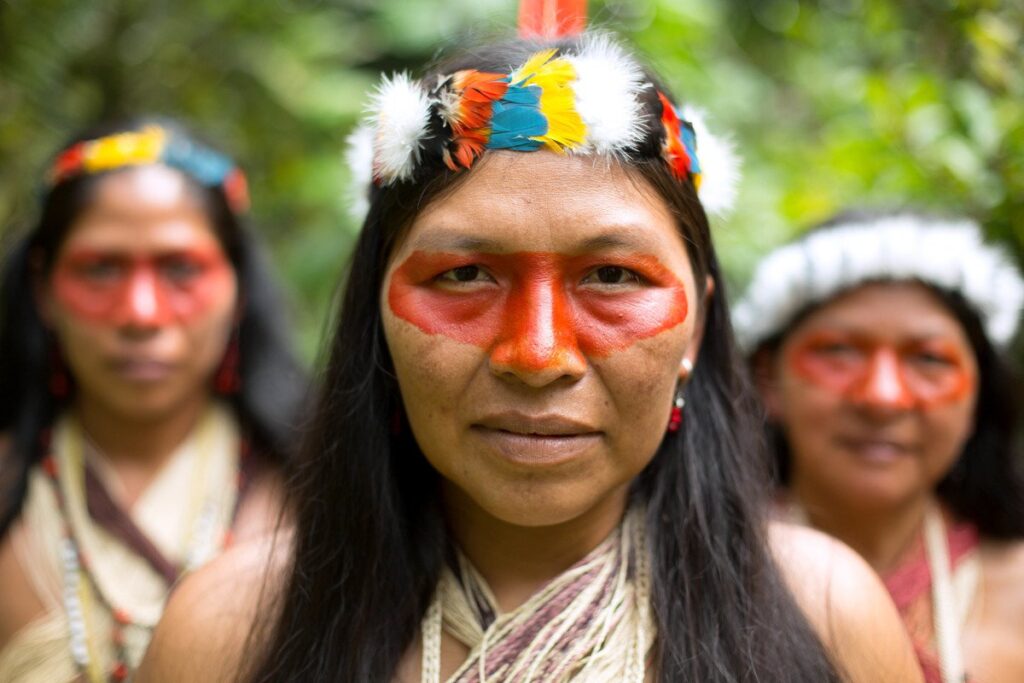Genetic resource commercialisation is a flourishing industry. “Biopiracy is defined as acquiring unauthorised access to biological material and using it for commercial goals, as well as obtaining exclusive rights over the indigenous people and gaining monopoly rights over the biological material.” [1] The indigenous people of the world possess vast traditional knowledge. How can we protect this traditional knowledge? There is a Traditional Knowledge Digital Library (TKDL), which contains a bundle of information about Indian medicine and its usage in India. The first country to start the TKDL project is India, which was initiated in 2001 in collaboration with CSIR, the Ministry of Science and Technology, the Department of Ayurveda, Yoga, and Naturopathy, Unani, Siddha, and Homoeopathy (AYUSH), and the Ministry of Health and Family Welfare of India. It converted and structured the ancient texts into 34 million A4-sized pages along the lines of a patent application and translated them into French, German, Japanese, and Spanish.[2] The TKDL database is currently being used by 16 patent offices across the world, which includes the examination of patent applications. We can access the information through the TKDL website[3].
LANDMARK JUDGEMENTS ON BIOPIRACY:
The following are the landmark judgements on biopiracy relating to other countries that have patented Indian traditional knowledge without the recognition of the Indigenous people.[4]
Turmeric Case (Curcuma Longa Linn)[5]
In the Indian kitchen, the rhizomes of turmeric are used as a spice for flavouring the food. The quality of turmeric is also used in the manufacture of medicines, dyes, and cosmetics. As in the case of medicine, it is traditionally used to treat burns and cure wounds and rashes. A US patent was given on using turmeric to heal the wounds of two expatriate Indians at the University of Mississippi Medical Centre in 1995. The CSIR[6] challenged the US patent on the grounds of existing prior art, i.e., traditional knowledge, and filed a case to re-examine it. The CSIR claimed that turmeric has been used for thousands of years to heal wounds and rashes, therefore stating that its medicinal use was not a novel invention. Their claim was supported by documentary evidence from the Sanskrit text and a paper published in a journal called IMA (Indian Medical Association) in 1953. The US PTO maintained the CSIR objections and revoked the patent despite an appeal by the patent holders. Since it was the first time a patent based on traditional knowledge from a poor nation was successfully challenged, the Turmeric case was a landmark judgement. This patent waswithdrawn by the US Patent Office in 1997 when it was determined that the discoveries made by the innovators were not unique and had been known for centuries in India.
Neem Case (Azadirachta indica A. Juss)[7]
The Neem case involved a legal dispute where India challenged a 1994 European patent granted to W.R. Grace Company for Neem’s fungicidal properties, arguing it misappropriated traditional knowledge. In 2000, the European Patent Office revoked the patent, acknowledging Neem’s well-known medicinal uses in India.
Basmati Rice Case (Oryza sativa Linn.)[8]
The Basmati rice case involved India contesting RiceTec’s 1997 US patent claim on Basmati rice cultivation. India argued that this was the biopiracy of indigenous knowledge. The USPTO initially granted a partial patent but revoked it in 2001, acknowledging Basmati’s Indian origins and misleading use by RiceTec, marking a win for India’s traditional knowledge.
Kava case (Piper methysticum Forster)[9]
Kava, a significant Pacific cash crop valued for its ceremonial beverage, is cultivated in over 100 varieties. L’Oreal patented its use for hair loss reduction and hair growth stimulation.
PROTECTION OF BIOLOGICAL RESOURCES UNDER THE STATUES
In India, biological resources are protected, and the concept of biopiracy is prevented by the following acts:
- The Biological Diversity Act, 2002: It safeguards traditional knowledge of biological resources. It requires informed consent from local people and the State Biodiversity Board for access to genetic materials and knowledge and ensures the fair distribution of benefits that derive from their use. Section 6(1) of the Biological Diversity Act, 2002 prohibits applying for intellectual property on inventions using Indian biological resources without prior consent from the National Biodiversity Authority (NBA).[10]
- The Indian Patent Act, 1970: Indian law protects traditional knowledge (TK) and biological resources through the Patents Act, 1970, which defines inventions and excludes non-inventive mixtures and TK-based inventions from patentability. Sections 3(e) and 3(p) specify what is not patentable. Patent applications must be novel, involve an inventive step, and provide full disclosure of the best method of performing the invention, as detailed in Section 10(4) of the Patents Act.
AUTHOR:
Thirisha S, 4th-year student of B.A., LL.B. (Hons.) from School Of Excellence in Law.


